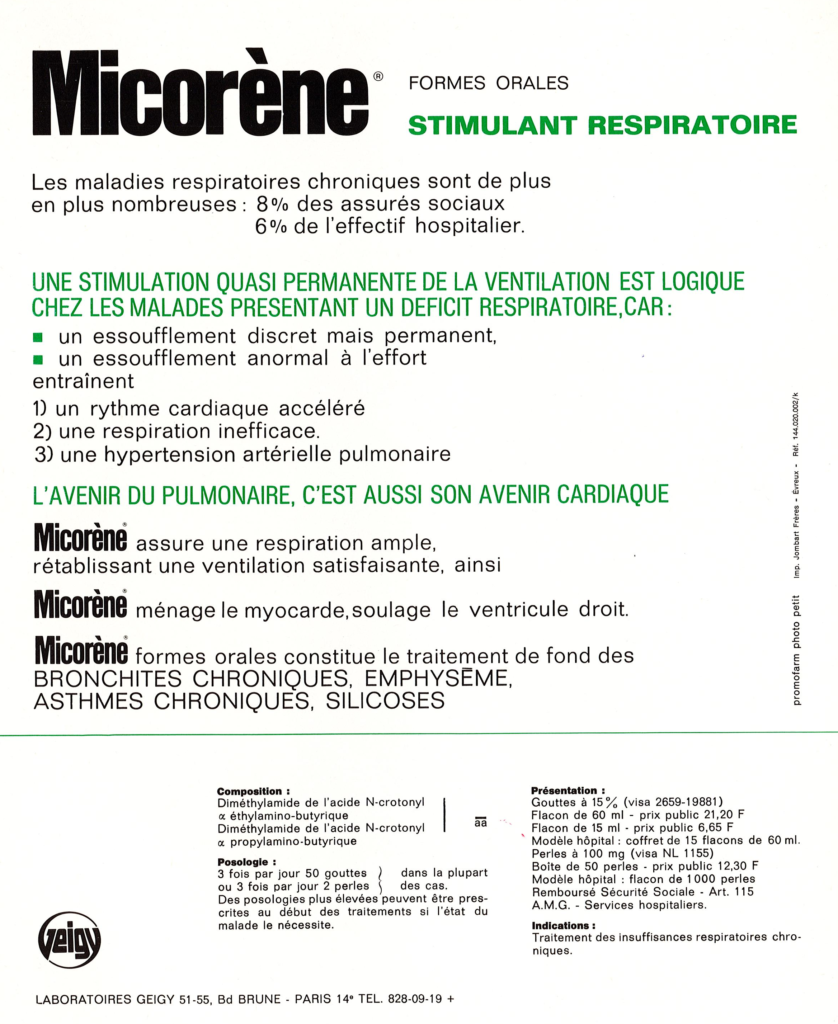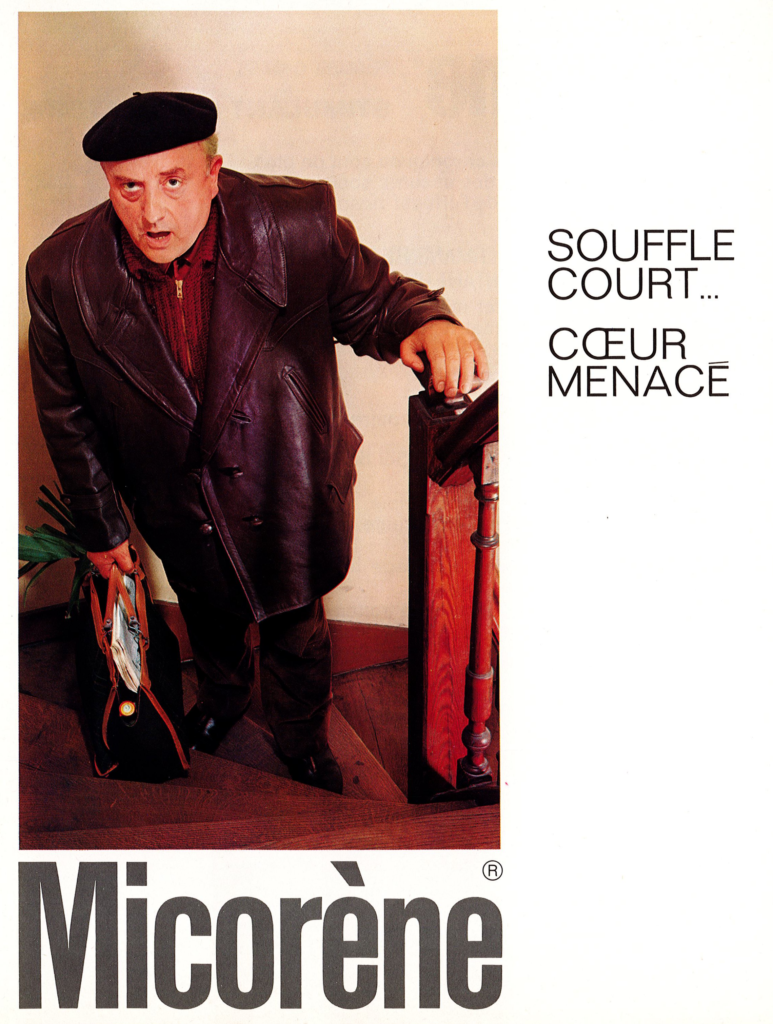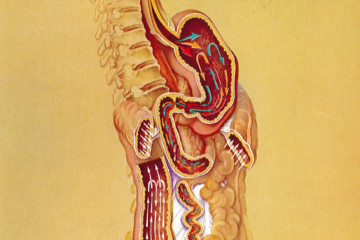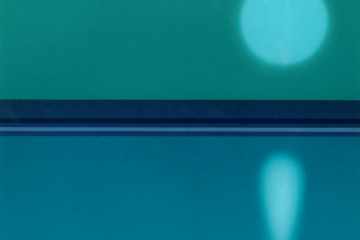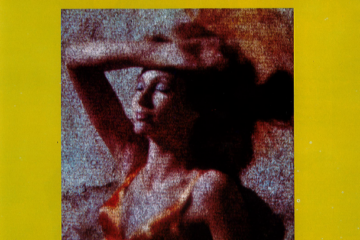The active principle of Micorene® was the molecule called prethcamide, which is in fact an equal mixture of two related amides: cropropamide and crotetamide (two aliphatic carboxylic acid amides).

This old oral drug, introduced in the 1950s in Europe (not approved in the US), acted as a respiratory stimulant, to treat patients with obstructive airways disease who develop chronic ventilatory failure. The drug helped to reduce the arterial carbon dioxide pressure (pCO2) pressure. Its long-term efficacy has been questioned, the drug being qualified of “a mild and somewhat inconstant respiratory stimulant”. The drug was banned by the International Olympic Committee because of its potential to stimulate performance of athletes. Today, it remains an illicit drug banned by the World Anti-Doping Agency. The use of this analeptic drug as a respiratory stimulant was abandoned in the 1970s.
Prethcamide was also used in veterinary medicine, notably to correct disturbances in respiratory adaption immediately after calving. The drug showed a beneficial effect in new-born calves, increasing in inspiratory and expiratory volumes. It was also used in horses, although it was prohibited by the horse-show association rules.
